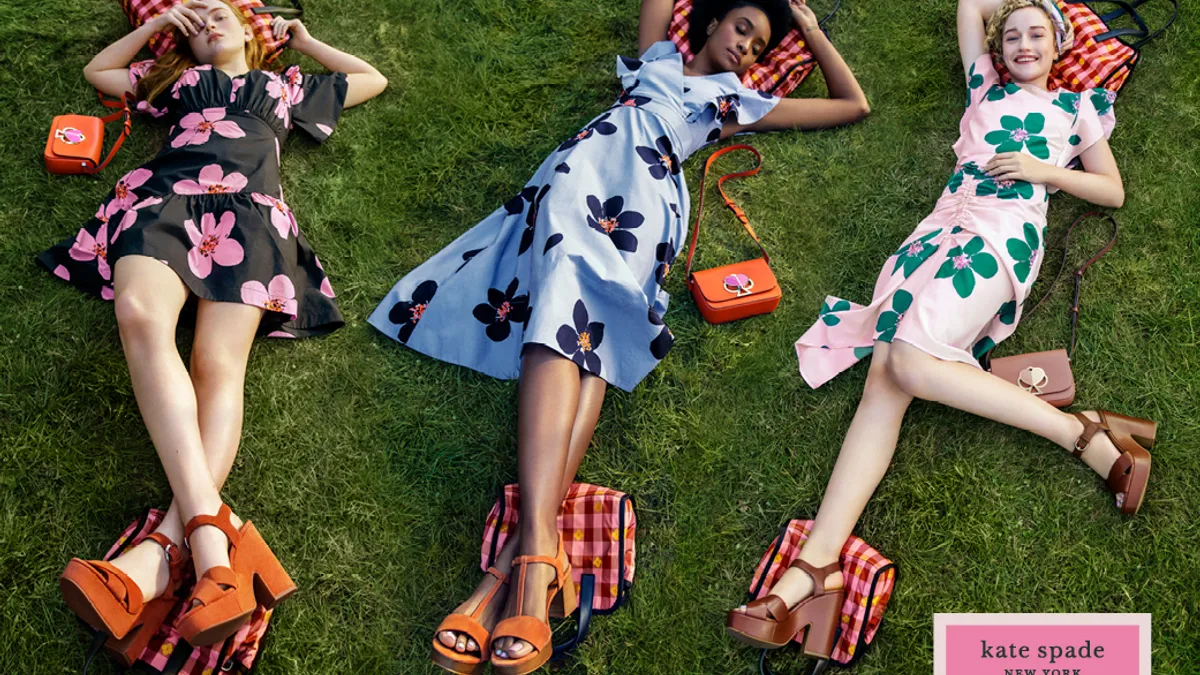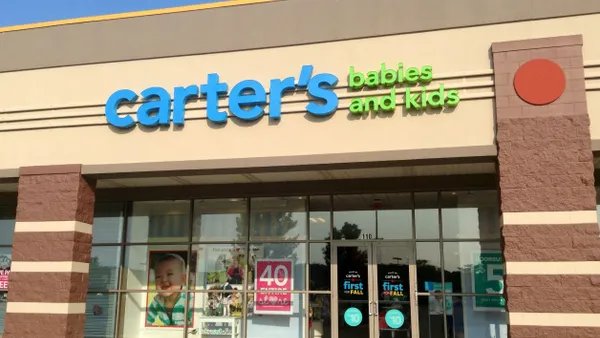Dive Brief:
-
Tapestry on Thursday said that third quarter net sales rose 1% to $1.33 billion, from $1.32 billion in the prior year, as net income fell to $117 million from $140 million a year ago.
-
Inventory stood at $811 million at the end of quarter, versus $714 million in the year-ago period, according to a company press release. The company announced that its board of directors authorized a buy-back of up to $1 billion of its outstanding common stock. On a conference call with analysts, the company also said that Noam Paransky last month arrived from Gap Inc. to take the role of chief digital officer.
-
By brand in the quarter: Coach net sales fell year over year to $965 million from $969.3 million as global comps rose 1%, (including some 100 basis points from e-commerce). Coach operating income fell to $239.5 million from $250.4 million in the prior year, and operating margin fell to 24.8% from 25.8%. Kate Spade net sales rose 4% to $281 million as global comps fell 3%, with 700 bps from e-commerce; operating income fell to $6.1 million from $12.7 million last year, an operating margin of 2.2%, down from 4.7%. Stuart Weitzman net sales rose to $85.3 million from $83.8 million as operating loss expanded to $13.6 million from $11 million last year.
Dive Insight:
Despite some declines, Tapestry's brands are advancing, and Kate Spade in particular is gaining traction under new creative director Nicola Glass. While the apparel and accessories conglomerate saw some sales, profit, margins and comps fall in the quarter, its brands managed to beat most expectations for earnings and store comps, in part thanks to global e-commerce growth.
"We think [Tapestry]'s results are particularly impressive given it reported its 2Q several weeks ahead of the industry, and thus didn't have the foresight to appreciate the extent to which industry trends deteriorated in February/early March — and yet, delivered on its targets," MKM Partners Managing Director Roxanne Meyer said in comments emailed to Retail Dive, adding that Kate Spade's results show that "merchandise under new design leadership is resonating, despite pressure from the clearing of residual holiday product. … We view reiterated full-year guidance as a signal that Kate Spade is expected to show continued sequential progress."
Tapestry has more to do in accomplishing its goals for Kate Spade, which the company bought in 2017 for $2.4 billion. "The company is still working through the Kate Spade turn around. Kate Spade is also starting to focus on the Chinese market, which is a positive for the brand," Jane Hali & Associates analysts wrote in comments emailed to Retail Dive, noting that Glass' designs only began to arrive in the third quarter. "The product across categories is strong. Glass has also reimagined the Kate Spade logo and simplified it by only using the spade, which looks very minimalistic. However, a sale section has remained all season with 30% off sale prices. Kate Spade has a very branded experience in-store and online. The stores still have the quirky color approach and they lack experiences."
The conglomerate's brands all focus a lot on the cutthroat handbags segment, and CEO Victor Luis said on the call the company is moving through some discounted inventory at Kate Spade. But they, like LVMH and Kering, are holding their own, according to Jane Hali. "The affordable luxury handbag market ... is flooded with more choices and points of sale than ever, making this handbag market a highly competitive category," analysts said. "Social media has helped the fragmentation of this affordable luxury handbag market. Many of the successful bags today come from direct-to-consumer, independent labels. Based on the latest reporting from LVMH & Kering Spa, the handbag mid-priced, (affordable luxury) competition has not taken market share from luxury handbags."
Overall, the conglomerate enjoys a runway for growth at all three brands. "We continue to view [it] as one of the best longer-term growth opportunities and view ongoing expectations for double-digit [earnings per share] growth next year," Meyer said, assuming that Coach can "still grow comps," that sales of Kate Spade's better product will gain real traction in the next quarter and that Stuart Weitzman will return to growth thanks to operational improvements and under newly appointed head of design Edmundo Castillo's leadership. "[T]he new $1bn stock repurchase authorization signals management's confidence and provides an incremental lever for earnings growth."













